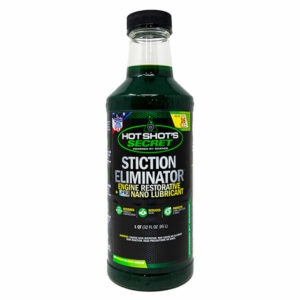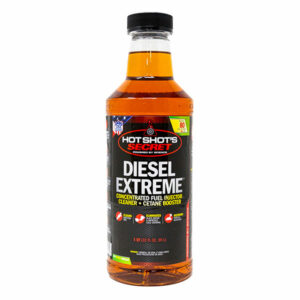What Does the P0430 Code Mean?
P0430 is an error code that appears when your downstream oxygen sensor detects irregular catalytic converter performance. This diagnostic trouble code (DTC) indicates that the system is running below the efficiency threshold. The P0430 code is triggered by a problem in the bank 2 location. Bank 2 is the side of the engine opposite the frontmost cylinder (bank 1).
If your On-Board Diagnostics (OBD)-II code reader displays this code, you may need to get your vehicle to an auto shop for inspection by a trained mechanic. Learn more about the causes of P0430 codes and how to address them.
Catalytic Converter Overview
Your catalytic converter is a vital device for reducing emissions. It has a chamber called a catalyst that breaks down contaminants produced by the engine into harmless gases like water vapor, steam and carbon dioxide (CO2). It splits these harmful molecules into gases before releasing them into the atmosphere, making them safer for the environment.
You can think of a catalytic converter like your body’s immune system. When your immune system identifies foreign substances — or antigens — it sends signals to attack and get rid of them.
Catalytic converters target three main groups of toxic gases:
- Carbon monoxide (CO)
- Nitrogen oxides (NOx)
- Hydrocarbons (HC)
When a catalytic converter isn’t working properly, it struggles to break down toxins in the exhaust. As a result, your vehicle emits more contaminants and fuel vapors into the environment.
The downstream oxygen sensor notices this change in performance and notifies the vehicle’s computer, which activates the check engine light, logging the corresponding OBD-II trouble code. In some cases, however, a P0430 code can indicate a problem with the sensor instead of the actual converter.
Generally, a vehicle with a faulty catalytic converter will continue to run normally for a while. However, an internally damaged converter can eventually harm your engine when left untreated.
What Are the Common Symptoms of a P0430 DTC Code?
Whether you have a problem with the oxygen sensor or the catalytic converter, you likely won’t notice reduced performance — at least not immediately. However, if left unresolved, a minor issue could spiral into a larger one. A defective catalytic converter can burn through over time. The converter’s inner fiber may have burned through if the engine burns excessive oil.
Typically, you’ll first notice an illuminated or flashing check engine light. Upon plugging the OBD-II scanner into the connector, you’ll see the DTC code P0430.
A clogged or blocked converter can cause engine performance difficulties, like a lack of power, stalling and rough idling, especially in cold weather. Depending on the issue’s severity, you might also notice:
- Smoke, smog or dark exhaust fumes coming from your vehicle.
- Weak acceleration and engine performance.
- Excess heat from under the vehicle.
- A sulfur or rotten egg odor.
- A failed emissions test.
Driving with a worn-out converter usually isn’t too risky. Even so, it’s essential to remedy any issues as soon as possible, as your catalytic converter is a critical component that keeps airborne contaminants at bay.
What Causes a P0430 Code?
A P0430 code typically indicates a problem with the catalytic converter, such as clogging or blockage. However, some other possible causes are:
- Faulty O2 sensors yielding inaccurate emission level readings.
- Broken or improperly installed wiring for downstream oxygen sensors.
- An upstream leak in your exhaust system (such as a loose header pipe or a crack in the exhaust manifold).
- Damaged fuel injectors.
- Computer-related problems such as outdated software.
A few factors can cause the converter to malfunction. For instance, an engine misfire or imbalanced fuel-to-air ratio can cause raw fuel to pass through the converter, leading to overheating, and in severe cases, the converter may glow bright red. Contaminated engine oil and coolant can also damage your catalytic converter.
How to Fix a P0430 Code
Fixing your vehicle’s P0430 code depends on the underlying cause, but replacing the catalytic converter is typically necessary to rectify the error message. However, a failing O2 sensor could also be the culprit, so identifying the true cause will require a little homework.
When attempting to troubleshoot and repair a DTC code on your own, remember that different vehicles are prone to unique issues. For example, a P0430 Chevy code may require a different fix than a P0430 Ford code. Referencing your vehicle’s manual could shed some light on the predicament.
Here are a few measures you can try at home:
- Look for loose connections. Check all your exhaust system’s connections to see if anything appears loose or damaged. Try tightening any loose connections or replacing any damaged parts.
- Examine the oxygen sensors. If all connections seem intact, inspect your oxygen sensors for signs of wear. If they appear damaged, replacing them is usually a quick and straightforward task.
- Clean your catalytic converter. If your oxygen sensors function normally, you can try cleaning your catalytic converter. Spraying a chemical cleaner through the converter’s interior can help remove clogging deposits — just ensure you choose a quality cleaner and follow the manufacturer’s instructions.
When you have the correct tools and mechanical know-how, minor hiccups like a loose connection or broken sensor can be easy to fix on your own. If the P0430 code remains present after you’ve tried these steps, your catalytic converter is likely failing and needs to be replaced. Bringing it to a professional mechanic is often necessary in that case, as the job requires specialized expertise and tools.
Speak With Our Experts or Try Our Additives
Sometimes, dirty engine oil is to blame for faulty catalytic converters or a high-quality fuel additive may be worth a shot. At Hot Shot’s Secret, we carry a full line of fuel and oil additives for gas and diesel vehicles. We manufacture these solutions to address issues like:
- Excess emissions.
- Poor acceleration.
- Sludge and harmful deposits.
- Rough engine starts.
Our products are backed by rigorous scientific testing, so we’re confident they’ll meet your needs. However, we also have a money-back guarantee if your product doesn’t perform as described.
Browse our online store to find additives for your vehicle today. Need help finding the right product for your engine and requirements? Fill out our contact form or call 800-341-6516 to speak with one of our experts.



